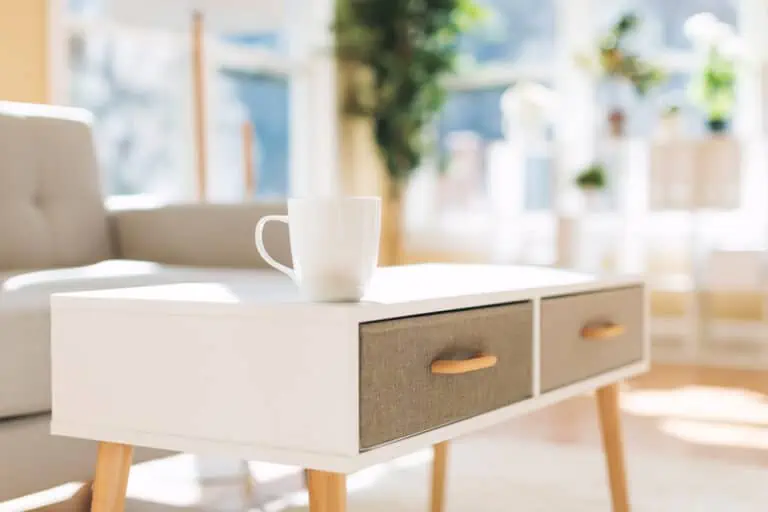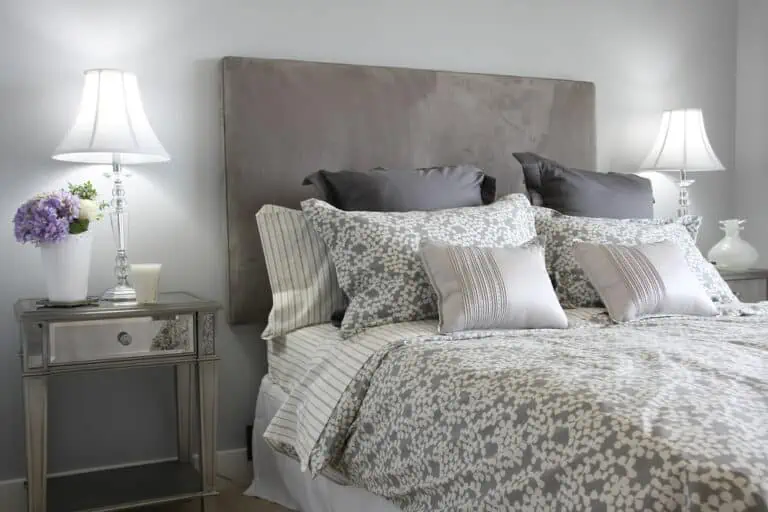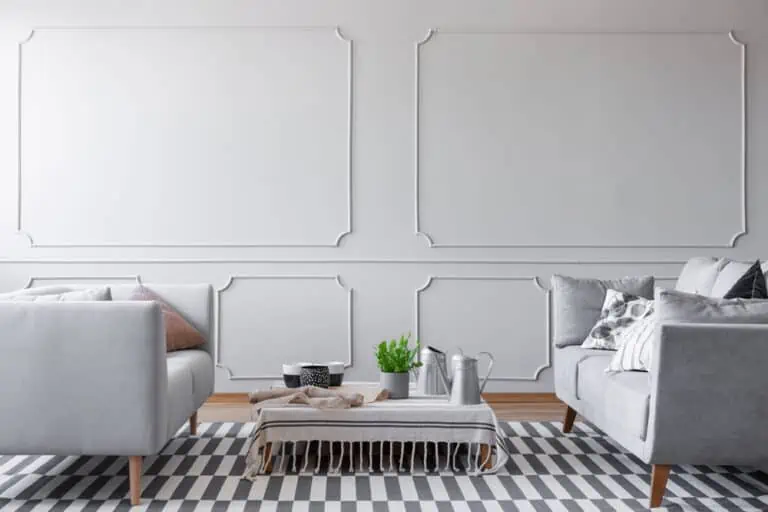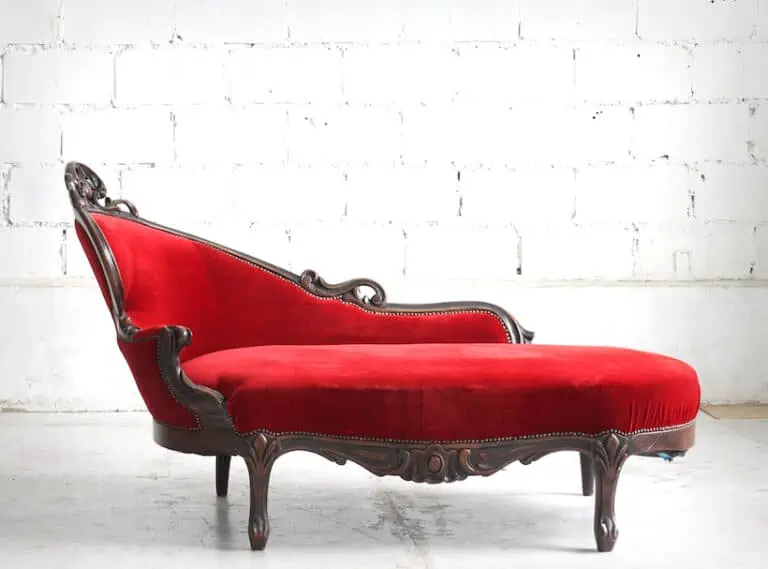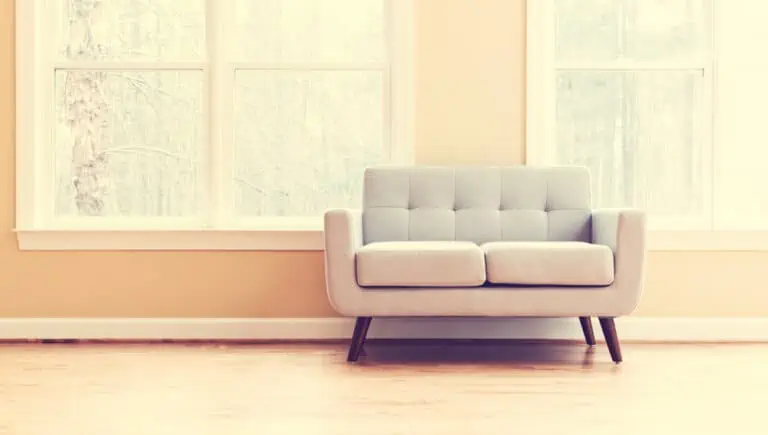Why You Should Consider an Ottoman Thats a Different Color Than Your Couch
Homebody Forever is reader-supported. We may receive a commission if you make a purchase through a link on this post.

When it comes to mixing and matching your furniture, there are no rules. All that matters is that you like it, and it doesn’t clash too much with the rest of your decotr.
In fact, a trend in today’s interior design calls for mixing various colors, textures, and patterns to create a dynamic and stylish living room.
This means that it’s perfectly acceptable to have an ottoman with a different color or pattern than your couch, which can bring an added visual interest to your space.
The key is to ensure that the colors chosen don’t clash and that they still work together harmoniously, which in turn enhances the overall aesthetic of the room.
Understanding Ottoman and Couch Color Coordination
Color Theory Basics
When deciding on the color for your ottoman and couch, it’s helpful to gather some basics knowledge of color theory. In simple terms, color theory is the study of how colors relate, interact, and influence each other. A common tool to help with color coordination is the color wheel.

This circular representation of colors helps you visualize the relationships between different hues. Complementary colors lie opposite each other on the color wheel, while analogous colors are situated next to one another.
By understanding these relationships, you can make informed decisions about pairing your ottoman and couch colors in a way that doesn’t clash or make anything look out of place.
Room Aesthetics
The overall aesthetics of your room play an essential role in your ottoman and couch color choices. When you’re choosing the colors for these pieces of furniture, consider the mood you’re trying to create in the space.
For example, a monochromatic color scheme can evoke a more calming atmosphere, while contrasting colors create a striking, bold aesthetic.
It’s important to consider how the colors and textures of your ottoman and couch will relate to the rest of your room, including flooring, wall colors, and other furnishings.
Remember, you have the flexibility to choose whether you want a matching or contrasting pair. Mixing colors, materials, and textures can result in a stylish and elegant interior design, even when using different hues for your ottoman and couch.
Pros of Matching Ottomans and Couches
Visual Harmony
When you choose to match your ottoman and couch, you’re creating a sense of visual harmony in your living space. By using the same color or fabric for both pieces, you create a cohesive look that makes your room feel more balanced and put together.
This can be especially pleasing to the eye, as it creates a sense of continuity throughout the space.
Unified Space
A matching ottoman and couch can also help to unify your living area. By using the same material and style for both pieces, you’re creating a focal point and a seamless flow throughout the room.
This can be particularly beneficial in open concept living spaces (particularly small ones), as it can visually define separate areas.
Reasons to Choose a Different Color Ottoman
Adding Contrast and Interest
Choosing an ottoman in a different color than your couch is a fantastic idea to add contrast and interest to your living room.
A contrasting color not only creates visual variety but also helps in highlighting the textures and materials used in your space. In fact, mixing colors and fabrics is a popular trend that results in a stylish and elegant interior design.
When selecting a color for your ottoman, consider picking an accent color that complements the main color palette of your living room.
Don’t be afraid to experiment with bold colors or even patterned fabrics, as they can really make a statement and draw attention to your ottoman.
Creating Focal Points
Having a different colored ottoman can also create a focal point in your living space, adding character and personality to the overall aesthetic of your room. .
Make sure that your ottoman doesn’t clash with other elements in your room. Instead, opt for a color that complements your existing furniture pieces and accessories. This can help establish a harmonious and visually appealing space.
Tips for Choosing the Right Ottoman Color
When you’re deciding what color ottoman you should opt for, consider the following tips:
Balancing Warm and Cool Hues
To establish a balanced look in your living room, try mixing warm and cool hues. If your couch showcases a warm color (e.g., red, orange, or yellow), identify an ottoman with a cool shade (e.g., blue, green, or violet).
Similarly, if your couch is cool-toned, opt for a warm-hued ottoman. By combining warm and cool tones, you can create a cohesive and inviting atmosphere for your room.
Remember that the ottoman doesn’t have to precisely match the couch or chairs; mixing colors and fabrics is currently a popular trend for living rooms and can be a great way to express your personal style.
Considering Room Accents
To help your new ottoman blend seamlessly into your living space, think about the room’s existing accents. Look at the color palettes of your throw pillows, rugs, wall art, and curtains.
You can either match the ottoman to these accent colors or choose a complementary hue that doesn’t directly match but still coordinates with them.
Try opting for a statement-making ottoman that features a bold-colored pattern while using a neutral solid-colored couch, or vice versa. The contrast can create an eye-catching focal point for your living area. Don’t be afraid to experiment with different patterns and textures.
Mixing Patterns and Textures
Playing with Patterned Upholstery
When it comes to mixing patterns and textures, it’s important to remember that you can have some fun with it. Don’t be afraid to choose an ottoman of a different color than your couch.
Experiment with patterned upholstery by selecting an ottoman with a bold pattern while keeping your couch in a solid, neutral color.
This contrast can help your ottoman become an eye-catching focal point in your living room. This can work especially well if you are matching an ottoman to a grey couch.
To make this look cohesive, try to find a pattern that shares a similar style or color with your couch. For instance, if your couch is a neutral beige, look for an ottoman with a pattern that incorporates beige elements. This approach will ensure that your living space feels harmonious and doesn’t seem overwhelming.
Experimenting with Textures
Texture is an often overlooked aspect of interior design, but it can have a big impact on the overall feel of a room. Consider experimenting with textured fabrics and materials for your ottoman to add another layer of interest.
This can create a sense of depth and sophistication to your living space. For example, pair a leather couch with a plush, fabric ottoman or vice versa.
When mixing textures, think about the overall balance and harmony in your living space. Introducing too many contrasting textures can make the room feel chaotic.
A good rule of thumb is to limit the number of textures you introduce and focus on complementing the existing pieces in your room.
Popular Ottoman and Couch Color Combinations
Looking to create a stylish and cohesive living room? Consider these popular ottoman and couch color combinations that can help elevate your living space.
- Neutral couch with a bold ottoman: If you have a neutral-colored couch in shades like beige, gray, or cream, adding a bold, colorful ottoman can bring a cheerful and lively vibe to your room. For instance, a bold-colored patterned ottoman with a neutral solid-colored couch makes a trendy statement.
- Leather pairing: Leather couches and ottomans create a luxurious and sophisticated ambience in your living room. Match your leather couch with a leather ottoman in a complementary color or go for a matching set to maintain the luxurious feel throughout your space.
- Earth tones: Bring nature indoors with a cozy, earthy color scheme. Consider a couch in olive green paired with an ottoman in cream or beige. You can also experiment with different shades of green to create a relaxing atmosphere.
- Monochromatic mixing: Create a stylish and uniform look by combining different shades of the same color. For example, a grey couch effectively works with both lighter and darker gray ottomans. This creates a subtle but cohesive visual in your living room.
When selecting a color combination, always remember that it’s essential to consider the overall aesthetics of your living space and personal preferences. Feel free to mix and match to create a unique look that showcases your personality and style.


